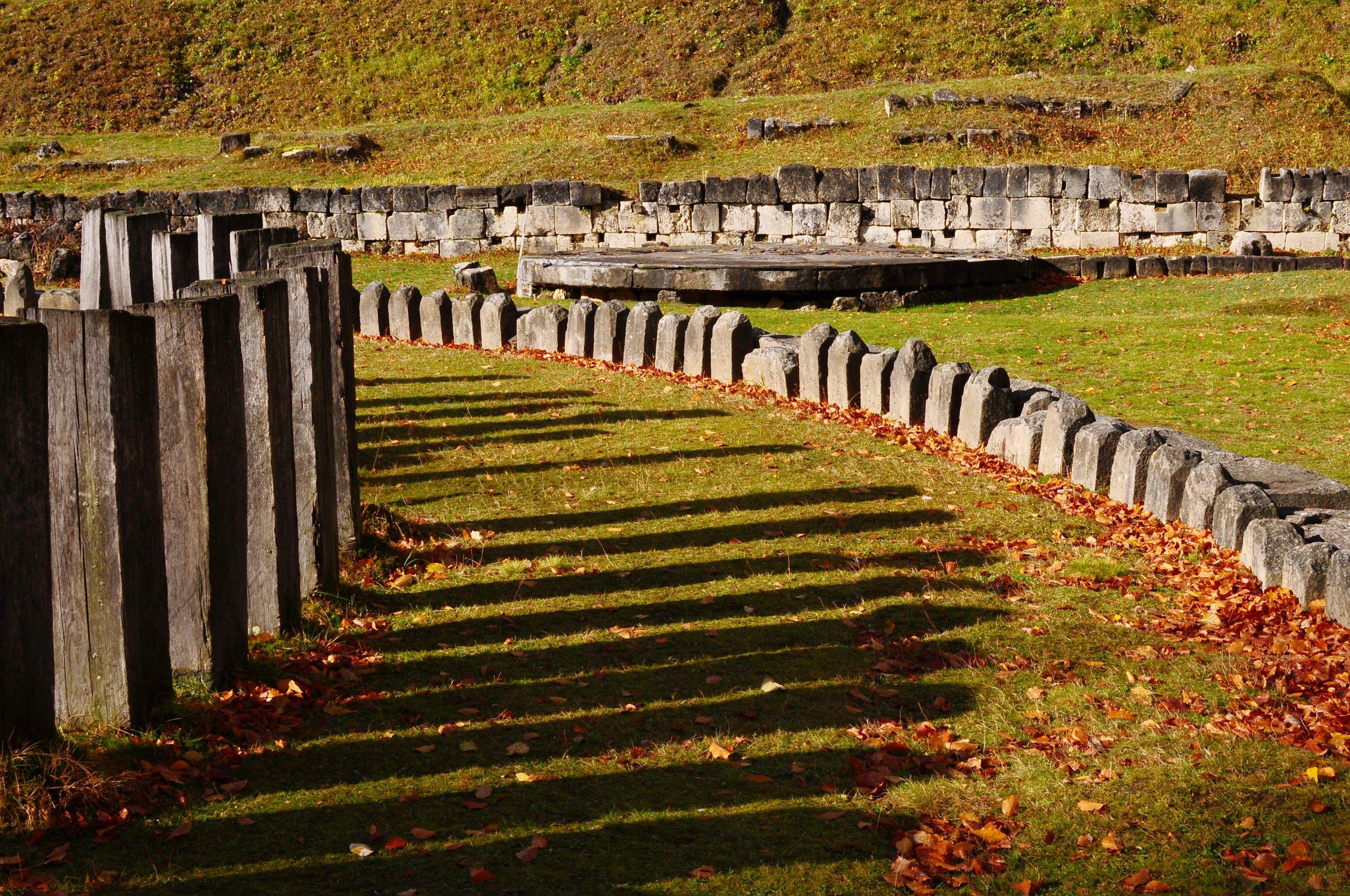If you reach the central part of the Dacian settlement you will find the fortification and the sacred area.
And if the steps take you to the numerous anthropogenic terraces, arranged on the slopes of the hill, learn that here were the civil areas, today divided into the Western residential quarter and the Eastern residential quarter.
You then get to the wall – the fortification you can see today dates back to the Dacian-Roman wars of the early 2nd century AD.
The fortification walls are constructed using limestone blocks and enclose an area of almost 30,000 m2.
From the fortification you enter the sacred area – in the past, the access was made on a road over 200 meters long, paved with limestone slabs.
Here the remains of seven temples, two circular, the rest with a rectangular plan, a monumental altar, as well as water evacuation systems have been identified.
The limestone and andesite plinths, drums and pilasters in the temples` structure speak for themselves about a monumental religious architecture, unique in its proportions in Dacia.
Did you know that the researches revealed several dwellings with circular or polygonal plans and craft workshops – of which the most important are the blacksmith ones because thousands of iron pieces were discovered in this area: forging tools, carpentry and woodworking tools, goldsmith', stonemasons' tools, agricultural, domestic objects, weapons, decorative pieces?










